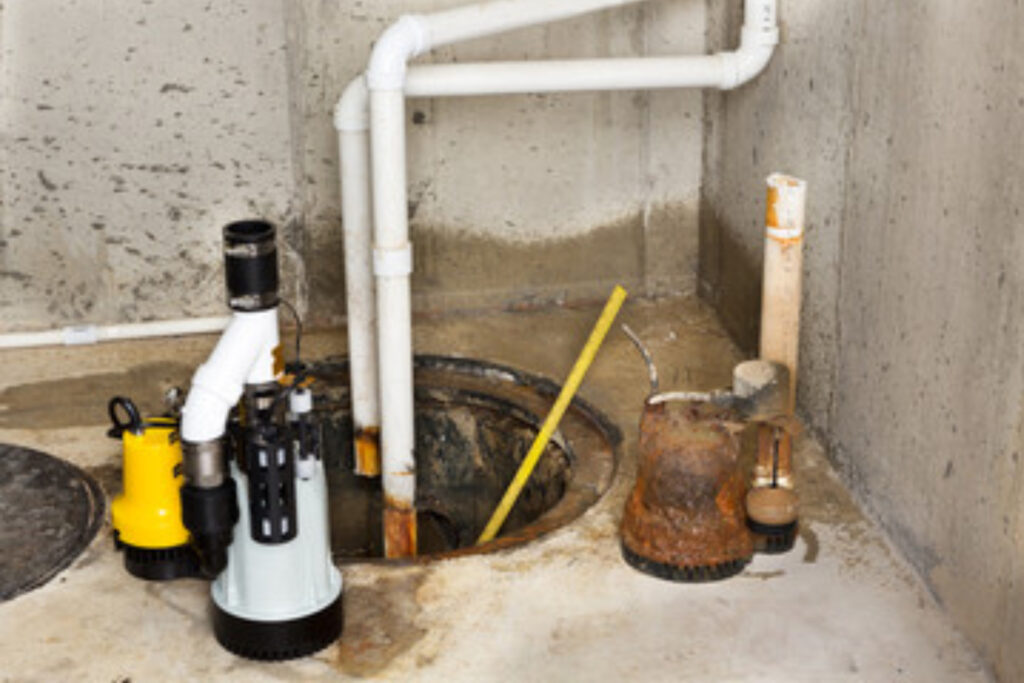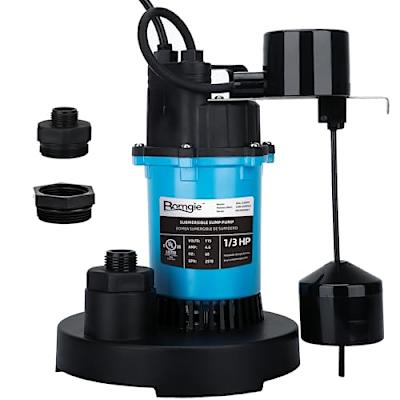Clear Instructions for Servicing a Sump Pump
Clear Instructions for Servicing a Sump Pump
Blog Article
Are you currently searching for guidance involving How To Effectively Clean A Sump Pump?

Sump pumps are vital elements in lots of homes, especially in locations susceptible to flooding or too much wetness. They help protect against water damage by efficiently removing excess water from cellars or crawl spaces. However, like any other device, sump pumps call for regular upkeep to guarantee they function properly when required one of the most. Cleansing your sump pump is an important part of its maintenance, and recognizing how to do it appropriately can save you from costly repair services and potential calamities.
Introduction
Preserving a clean sump pump is essential for its proper performance and durability. Overlooking this crucial job can lead to clogs, breakdowns, and ultimately, water damages to your home. Therefore, finding out exactly how to cleanse a sump pump is important for house owners that rely on these gadgets to maintain their basements dry and safeguarded.
Signs of a Dirty Sump Pump
Knowing when your sump pump needs cleaning is crucial for protecting against potential breakdowns. Some usual indicators that show a filthy sump pump include unusual noises throughout procedure, lowered water flow, and noticeable particles in the pit. If you notice any of these symptoms, it's necessary to clean your sump pump immediately to avoid any additional problems.
Getting ready for Cleaning
Prior to you begin cleaning your sump pump, it's vital to take some security preventative measures. Begin by shutting off the power to the pump to prevent any kind of electrical crashes. Additionally, put on suitable protective equipment, such as handwear covers and safety glasses, to protect on your own from dust, particles, and potential microorganisms.
Understanding the Sump Pump
Prior to diving into the cleaning process, it's essential to have a fundamental understanding of just how a sump pump works. Typically installed in a pit or container below the cellar floor, a sump pump includes a number of essential components, consisting of a pump, a float button, and a discharge pipeline. When water collects in the pit, the float button triggers the pump, which then pumps the water out through the discharge pipe, far from the building's foundation.
Detailed Overview to Cleaning a Sump Pump
Shutting down the Power
Begin by disconnecting the power supply to the sump pump to stop any mishaps while cleansing.
Looking For Correct Performance
Before reinstalling the pump, carry out a quick test to ensure that the float switch activates the pump appropriately. Put some water into the sump pit and observe the pump's operation. If every little thing is working properly, you can reassemble the pump and reconnect the power supply.
Getting Rid Of Debris and Dirt
Make use of a bucket or an inside story to remove any type of visible debris, dust, or debris from the sump pit. Dispose of the debris effectively to prevent it from blocking the pump or the discharge pipeline.
Cleansing the Pump and Float Switch
As soon as the pit is free from particles, carefully eliminate the pump from the pit. Inspect the pump and the float button for any kind of indications of damages or wear. Make use of a soft brush or fabric to cleanse the surfaces and get rid of any type of accumulated grime.
Purging the System
After cleaning up the pump and float switch, purge the sump pit with tidy water to eliminate any kind of remaining dust or debris. This will assist guarantee that the pump runs efficiently and effectively.
Maintenance Tips to Maintain Your Sump Pump Clean
Along with routine cleansing, there are numerous maintenance ideas you can follow to maintain your sump pump in ideal condition:
Conclusion
Cleansing your sump pump is a critical aspect of its maintenance and guarantees that it runs successfully when you need it one of the most. By following the actions laid out in this guide and incorporating normal upkeep into your regimen, you can extend the life-span of your sump pump and protect your home from water damages.
6 STEPS ON HOW TO CLEAN A SUMP PUMP PROPERLY
UNDERSTANDING SUMP PUMPS
Your sump pump plays a crucial role in protecting your home by managing and removing excess water. It primarily functions as a “shield”, guarding your basement against the damaging effects of water accumulation. The pump is housed in a sump pit in the lowest part of your basement, and its job is to pump out any water that collects there.
During heavy rainfalls or when snow melts rapidly, water can infiltrate your basement, posing potential risks like flooding, structural damage, and harmful mold growth. Here, the sump pump springs into action, pumping out the intruding water and directing it away from your home.
SAFETY FIRST
Before cleaning, remember to prioritize safety. Disconnect the sump pump from the power source to prevent any accidental electric shocks. Also, wear sturdy gloves to protect your hands from any sharp or dirty components within the pump.
REMOVE THE SUMP PUMP
After ensuring your safety, the next step is to remove the sump pump from its pit. Doing this might require careful maneuvering as you don’t want to damage any pump components. Once removed, clean the sump pit to remove any accumulated debris or sludge.
INSPECT THE PUMP
Inspect the pump for any visible signs of wear or damage. Check the power cord, float switch, and impeller housing. If any components look worn out or damaged, consider replacing them to ensure optimal performance.
CLEAN THE PUMP
Thoroughly clean the pump with warm, soapy water. Make sure to rid it of any dirt, gravel, or other debris that might impede its performance. You can use a toothbrush to clean the small, hard-to-reach parts of the pump.
REINSTALL THE SUMP PUMP
Reinstall the pump into the sump pit Make sure it’s positioned correctly to remove the water effectively Once it’s back in place, reconnect it to the power source TEST THE PUMP
Finally, pour some water into the pit to ensure the pump works correctly. It should start automatically and begin pumping out the water; if it doesn’t, check the power source and the positioning of the pump.
Remember, while cleaning your sump pump is an essential part of home maintenance, hiring a professional plumber for a thorough inspection and cleaning at least once a year is also important. This will ensure that your pump is in optimal condition, ready to protect your home from potential water damage.
BEST PRACTICES FOR CLEANING SUMP PUMP DISCHARGE PIPES
Regular Inspection: Regularly inspect your discharge pipes, especially during heavy rainfall or snowmelt periods. Look for any signs of blockage or damage. Early detection of problems can prevent serious issues down the line. Periodic Cleaning: Over time, sediment and debris can accumulate in the discharge pipes, impeding the flow of water. Regular cleaning helps keep the pipes clear and functioning efficiently. You can use a high-pressure water jet to effectively clean the pipes. Insulation During Winter: In colder climates, discharge pipes can freeze, blocking the outflow of water. Protect your discharge pipes from freezing temperatures by insulating them with foam pipe insulation. This will ensure the sump pump can continue to discharge water even in freezing conditions. Proper Positioning: The discharge pipe should be positioned to direct water away from your home’s foundation. Improper positioning can lead to water seeping back into the basement. Ensure the pipe is long enough and angled correctly. Installation of a Check Valve: A check valve prevents water from flowing back into your sump pit after the pump has pushed it out. Installing a check valve helps maintain the efficiency of your sump pump and reduces the risk of flooding. Minimize Pipe Turns: Every curve or turn in the discharge pipe can decrease the efficiency of water flow. By minimizing turns and bends in your discharge pipe, you can increase the efficiency of your sump pump. https://www.fullspeedplumbing.com/how-to-clean-a-sump-pump-properly9999/

I came across that page about How to Care for Your Sump Pump when browsing on the internet. Liked our content? Please quickly share it. Help another person find it. Thanks a lot for your time spent reading it.
Click Here Report this page